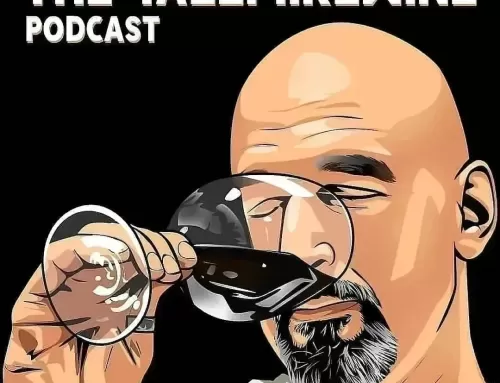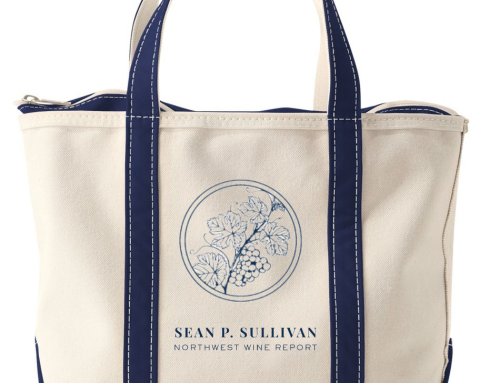
Cross-posting between Facebook and Twitter is problematic because they are vastly different Social Media tools with different uses, users, nomenclature, and etiquette. Let’s look at several problems that arise when cross-posting from Facebook to Twitter, which seems to be the most common case for many wineries and other businesses.
Example 1 – Cross-posting a Facebook post of less than 140 characters to Twitter
You’ve just posted something to Facebook. If I am a Facebook user I see this:
YOUR FB POST HERE
If I am a Twitter user, I probably see something like:
YOUR FB POST HERE fb.me/543210
The fb.me link in Twitter is a link to your Facebook post. Now if I am a Twitter user and I click on that link, what do I see?
YOUR FB POST HERE
The information is completely redundant with what I saw in Twitter. It looks like it might be a link to unique material, but it is really just a Facebook post cross-posted to Twitter. Sometimes it is very obvious when this is the case; sometimes it is not as we will see below, and this is where things become particularly problematic.
What do Twitter users do as a result of this? Users are less likely to click on links cross-posted from Facebook making these links less effective.
Example 2 – Cross-posting a Facebook post of more than 140 characters to Twitter
So you’ve just posted something to Facebook, and it’s longer than Twitter’s 140- character limit. What people see on Twitter is most likely something like:
YOUR FB POST HERE…fb.me/543210
The post has been truncated (…), often into something that’s completely meaningless to someone on Twitter unless they click on the link. The post is less likely to get traction on Twitter because it doesn’t stand up by itself without taking additional action.
Example 3 – Cross-posting an external link from Facebook to Twitter
Let’s say you read something you find really interesting and you want to share it and see people’s comments on it. On Facebook this looks as follows:
YOUR FB POST HERE
ARTICLE NAME HERE WITH LINK AND POSSIBLY A PICTURE
What does it look like on Twitter? You guessed it:
YOUR FB POST HERE fb.me/543210
There is no obvious difference between a tweet that is a link to an article you found interesting and a tweet that is simply a link back to something you posted on Facebook.
Additionally – and importantly – when Twitter users click on the link, they will go straight to the article, not to Facebook! There is, therefore, no ability for Twitter users to comment on the Facebook post unless they go to Facebook and search for your winery page. This, of course, defeats the purpose of trying to create interaction. Furthermore, any content you wrote over the 140 characters is lost completely because the link, in this case, goes straight to the article instead of going to Facebook.
Example 4 – Cross posting from Facebook to Twitter and not paying attention to responses on Twitter
This is probably the biggest problem when cross-posting between Facebook and Twitter. Let’s say you live in Facebook but rarely venture into Twitter. You post:
YOUR FB POST HERE…..fb.me/543210
Someone responds on Twitter:
“Hey @YOURWINERYNAME that’s really interesting!”
This is an opportunity for engagement. However, you don’t see the response or interact with the person because you’re not paying attention to Twitter. You’re living in Facebook. The opportunity for engagement – the entire point of what you’ve posted – is lost. Additionally, if you’re posting on Twitter and not looking for a response there, in essence, you’re spamming Twitter.
* * *
Now I’m not saying that wineries should not set up automated cross-posts between Facebook and Twitter. Time is short, and I know a lot of people don’t like/understand Twitter. Additionally, some people are simply looking to hit two birds with one stone and are actively responding and engaging people in both spaces. That’s fine.
However, if you are going to cross-post between Facebook and Twitter, there are some simple things you can do to make these posts more effective. More on that later this week.







I also feel like if you are posting the exact same content on Twitter as Facebook, why am I following you on Twitter? And what does that say about how you value your Twitter followers? I try to be very selective about what I push out to FB and Twitter simultaneously. (I've been doing it mostly from Instagram.) Of course, you never know what's going to get traction; interesting to see how the same post can catch fire on one platform and elicit deafening silence on another.
Couldn't agree more. The value in social media is the interactions that happen after a post. The point is not to simply vomit anecdotes and comments out into a vacuum, but be a part of a conversation.
Most people who are interested enough to "Like" a company on Facebook will also be interested enough to follow them on Twitter. Auto-generating cross posts is akin to sending the same email twice to someone on a mailing list, and I doubt anyone would think that is a good idea.
Sean, Good post and I have disconnected my blog from twitter and facebook. Thank you!